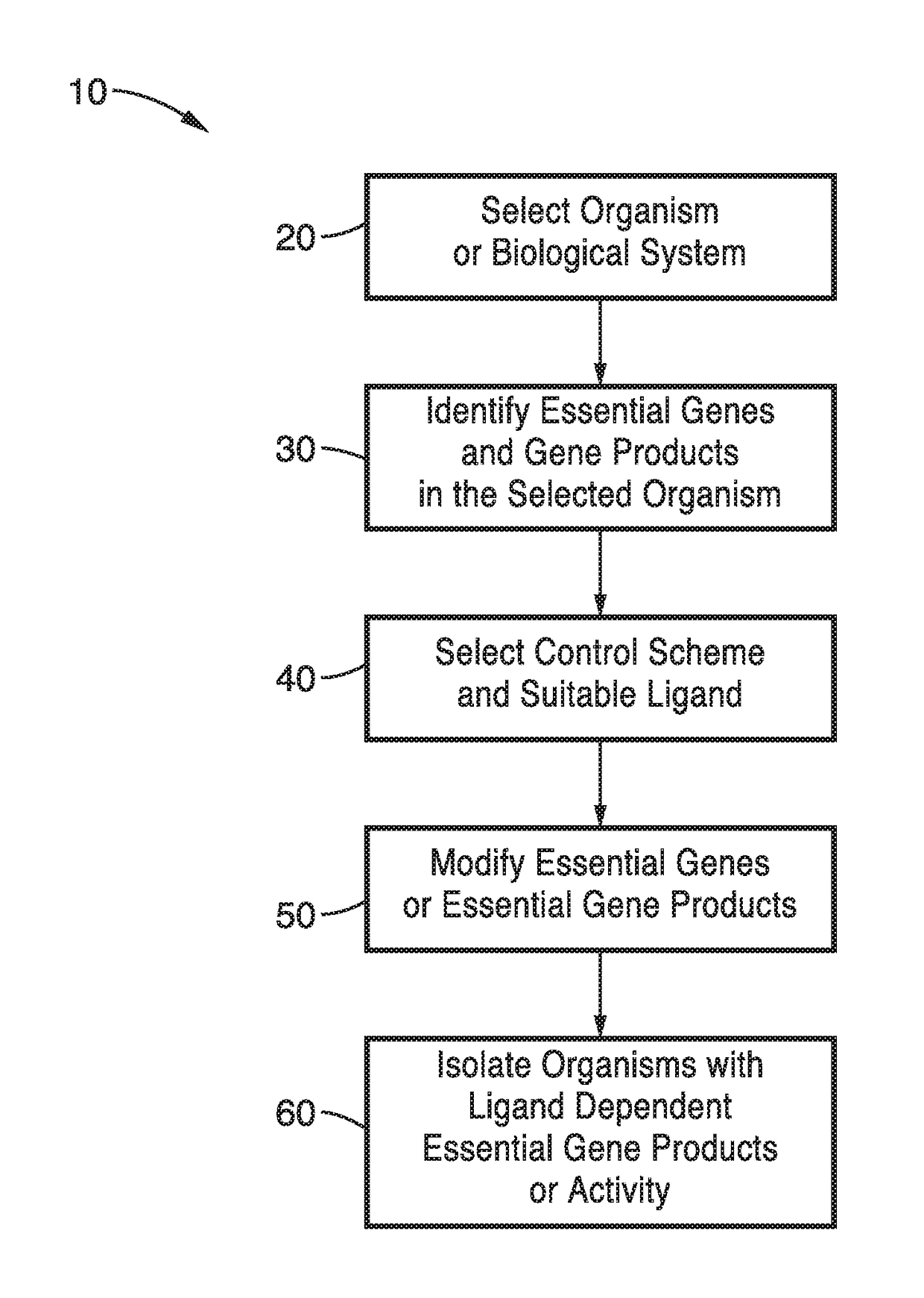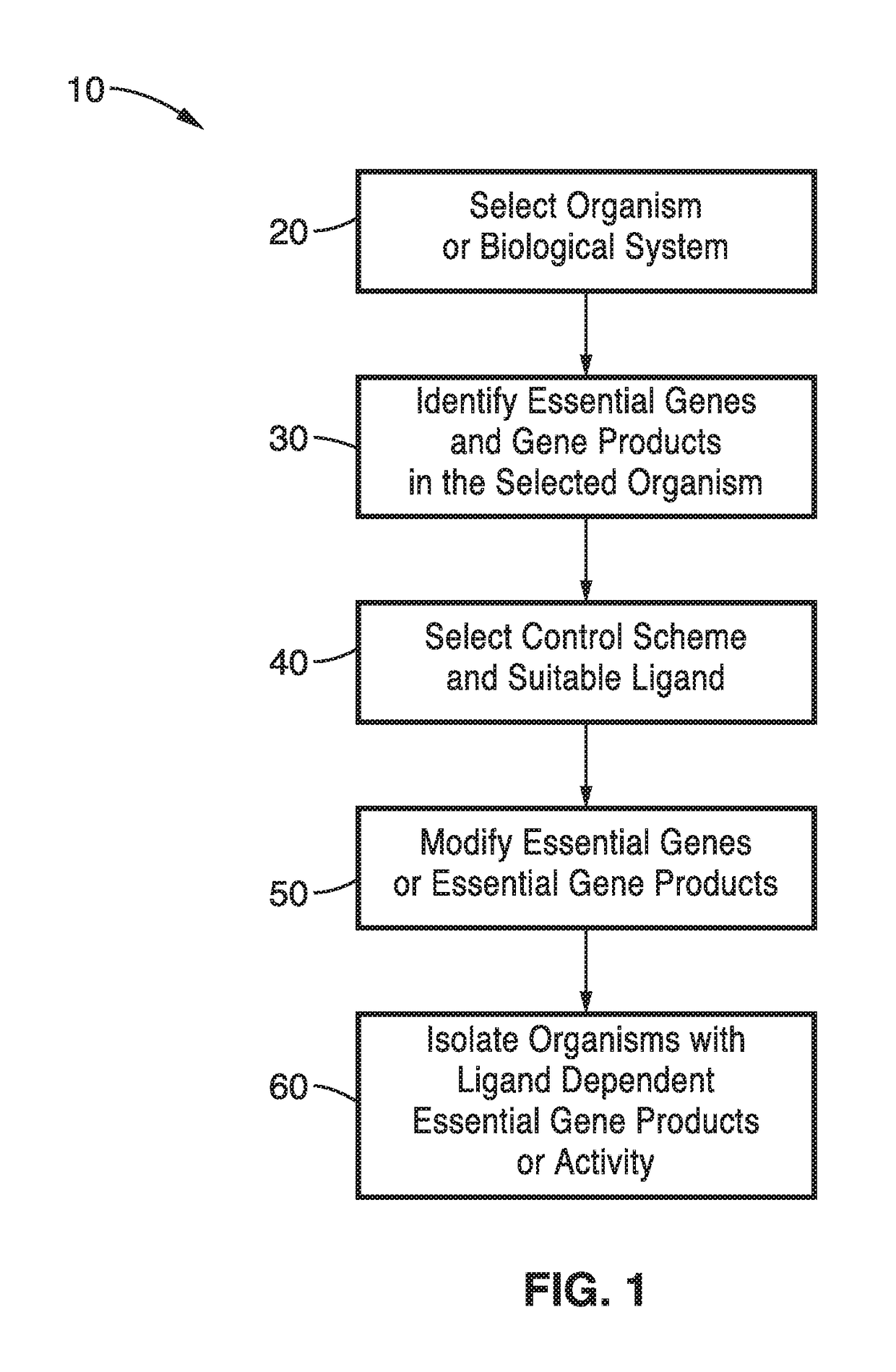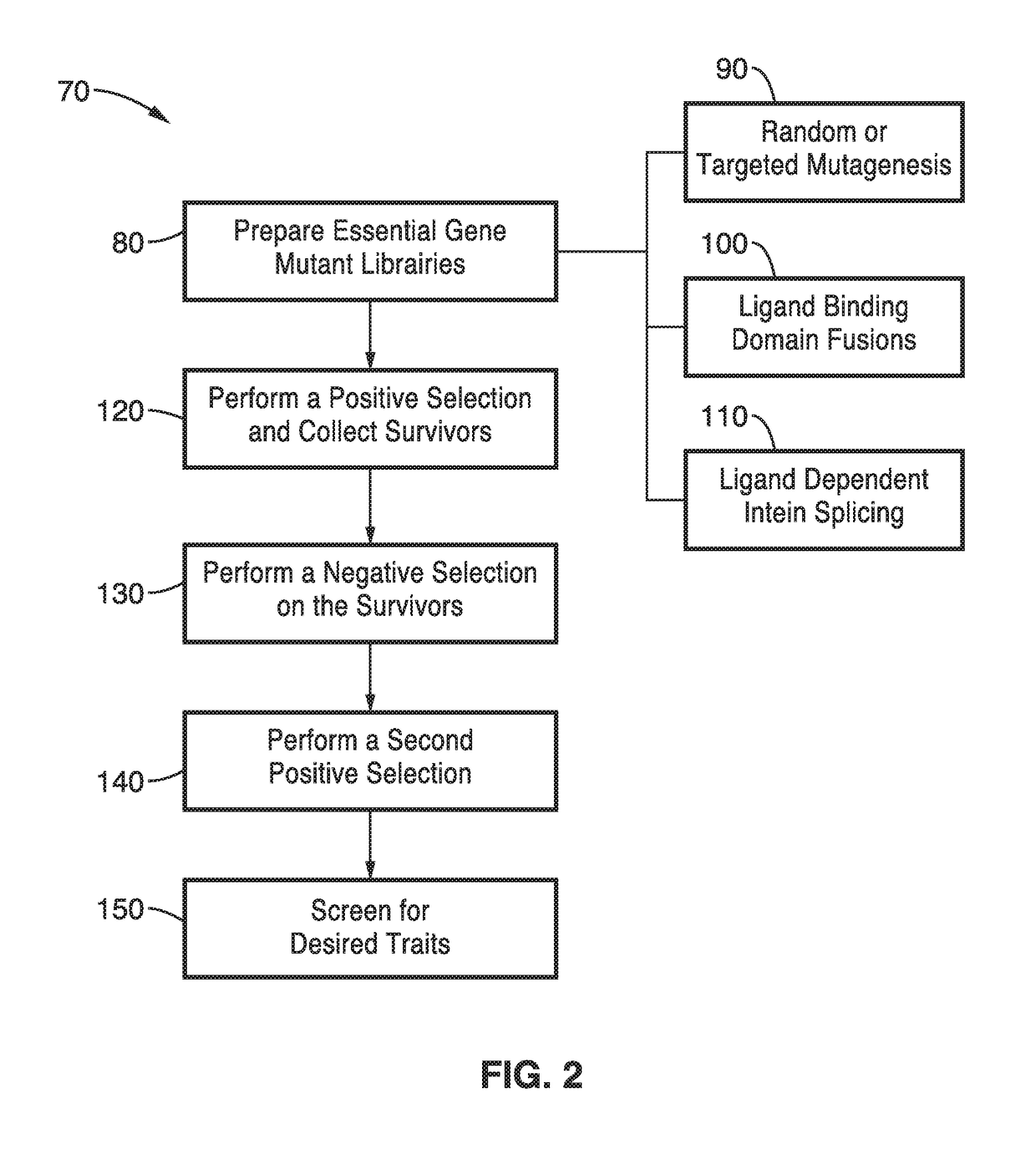Synthetic auxotrophs with ligand dependent essential genes for biosafety
- Summary
- Abstract
- Description
- Claims
- Application Information
AI Technical Summary
Benefits of technology
Problems solved by technology
Method used
Image
Examples
example 1
[0087]In order to prove the concept of the synthetic auxotrophs and the engineering methods, a biosafety strain of BL21(DE3) of E. coli was produced using the methods of the present technology as outlined in FIG. 2 and tested. Synthetic auxotrophs based on a ligand-dependent essential gene using 5 essential genes as test cases: pheS, dnaN, tyrS, metG, and adk were produced.
[0088]To identify ligand-dependent strains, a candidate list of essential genes necessary for E. coli's viability was assembled. The list was narrowed to those with a solved crystal structure so that the residues for mutagenesis could be chosen. Mutations were targeted to regions near the surface, but still within the hydrophobic core. Portions of the crystal structure containing groups of large, hydrophobic residues (for example Trp, Phe, Met, Ile, Leu) were subjected to targeted mutagenesis in 3 different ways, as follows.
[0089]In the first approach (on pheS and dnaN), mutagenesis was targeted such that a centra...
example 2
[0098]To further demonstrate the methods outlined in FIG. 2 and FIG. 3 the essential gene libraries that were prepared were subjected to selection and screening. Naïve essential gene libraries prepared at block 80 contain organisms of 3 basic phenotypes: viable mutant strains (functional essential genes), lethal mutant strains (non-functional essential genes), and ligand-dependent mutant strains (ligand-dependent essential genes). In order to isolate the desired ligand dependent strains, essential gene libraries were passed through a dual selection consisting of a positive selection based on chemically-complemented growth and a negative selection based on a penicillin technique. Survivors of the dual selection were screened for the desired phenotype.
[0099]For the positive selection 120, a library of strains resulting from a mutagenized essential gene was grown in the presence of 4 chemicals. Positive selections were based on viability in the permissive condition. Permissive conditio...
example 3
[0110]To demonstrate the utility of the ligand-dependent phenotypes for containment of genetically engineered organisms, two and then three ligand dependent (SLiDE alleles) were combined into BL21(DE3) bacteria. Multiple ligand-dependent alleles should reduce the escape frequency due to suppressor mutations. In addition, combining several of these modifications into a single strain should also decrease escape through horizontal gene transfer.
[0111]The combination of 2 SLiDE alleles into the industrially relevant strain BL21(DE3) of e. coli created a biosafety strain with an escape frequency of 5×10−10 and a combination of 3 SLiDE alleles in BL21(DE3) resulted in an escape frequency below the limit of detection of 3×10−11.
[0112]In particular, previously identified ligand-dependent strains were used as donor cells to generate P1 phage lysate for transduction. Alternatively, identified mutations were re-integrated into a new host using Cas9-recombineering methodology. BL21(DE3) was fir...
PUM
| Property | Measurement | Unit |
|---|---|---|
| Volume | aaaaa | aaaaa |
| Volume | aaaaa | aaaaa |
| Volume | aaaaa | aaaaa |
Abstract
Description
Claims
Application Information
 Login to View More
Login to View More - R&D
- Intellectual Property
- Life Sciences
- Materials
- Tech Scout
- Unparalleled Data Quality
- Higher Quality Content
- 60% Fewer Hallucinations
Browse by: Latest US Patents, China's latest patents, Technical Efficacy Thesaurus, Application Domain, Technology Topic, Popular Technical Reports.
© 2025 PatSnap. All rights reserved.Legal|Privacy policy|Modern Slavery Act Transparency Statement|Sitemap|About US| Contact US: help@patsnap.com



